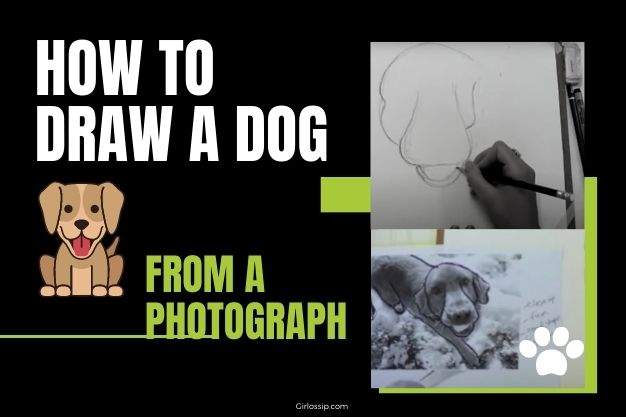
Do you consider a dog to be man’s best friend? It is indeed. A dog is an animal who will only shower you with love and care and expect the least in reciprocation. Have you ever thought of drawing a picture of your four-legged friend? No, you don’t need to be a master of the art to draw it.
See also:
- How to Learn Scooty Without Knowing the Cycle
- Best Graphic T-Shirts That Will Showcase Your Witty Personality
All you have got to do is take a picture of a dog, assemble the material required to make the drawing, and get started. The following is a step by step guide that can help you to draw a dog from the photograph:
Choose a reference photo
The first thing that you need to do is to choose a reference photo. If you are a beginner, choose a picture that is easy to draw. Make sure that the face of the dog is visible in the picture so that you can sketch without any obstruction.
You need to start by assembling the material to draw. Here is a list of things that you may need:
- Shading pencils
- Charcoal pencils
- Color pencils
- An eraser
- A sharpener
- A drawing pad
- Paper sheets
Once you have these, you can get started with the steps mentioned ahead.
Block the face by drawing lines
Start with tracing the photo by drawing lines on the paper. Keep the photograph below the paper and start making a reference line above it. It is an easy and quick technique to set the base of drawing. Once the reference ones have been created, you med to block the face.
Blocking refers to checking the angles of the photograph by the lines drawn. For instance, while sketching a dog, you need to ensure that reference lines are drawn in parallels with the eyes, nose, and ears. Blocking usually helps in defining the structure of the face of the dog.
Create an outline of the entire face
To make the entire outline of the face, you have to start drawing the ears, eyes, nose, and mouth of the dog. Create dimensions of the face from several angles. It is okay if you create the wrong dimensions, they are not permanent, they can be erased later. But creating the loose lines can facilitate looking at the bigger picture.
Pay attention to details. Once the loose lines are done, you have to start by drawing the eyes of the dog because they attract the most amount of attention. Draw the pupils, eyelids, eyelashes properly so that they resemble your dog’s face in the photograph appropriately. Furthermore, create an outline for the fur, shoulder, and other elements in the picture as well.
Start shading roughly
Now it is time to start sketching the dog’s face. The trick is to shade roughly with faint marks to get a good idea of how it is going to look. Put darker shades of the pencil on the areas where the picture appears to be darker.
Keep handy different shades of pencils and charcoal to create a better effect on the drawing. You can also use colored pencils if you don’t want a black and white sketch.
Observe precisely where the light is coming from and where the shadow lies in the photograph. Go light on the pencil so as not to break it, considering if you are a beginner. However, you need to decide how much shading is enough? Sometimes too much shading can result in the sketch falling apart.
Use a pencil to add definition
Adding strokes in the texture can add extra definition to the drawing. You can use soft or dark strokes as and when required. It is suggested to go from dark to light because if you use a darker shade it can be erased and made lighter.
To add the perfect definition to the drawing, you have to ensure to put the same texture which is in the picture. Try focussing the maximum on the details, because details will make the sketch look beautiful. Observe what all is going on in the picture and keep adding the specifics one after the other.
Nevertheless, throughout the process, you have to remember that it is a sketch and not a real photo. Do not dwell too much on the details, it can mess it all up. The sketch must appear fresh and effortless.
When you are on the verge of finishing the sketch, add the final touch-ups. Use an eraser to lighten the areas and add coarse marks to make it appear as realistic as possible. But make sure that all the final elements fit the picture. You don’t want too much of this and that in the sketch. Finally, show the drawing to your dog, and if he woofs, you have got the validation from the subject itself.